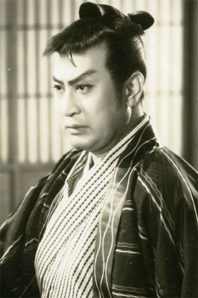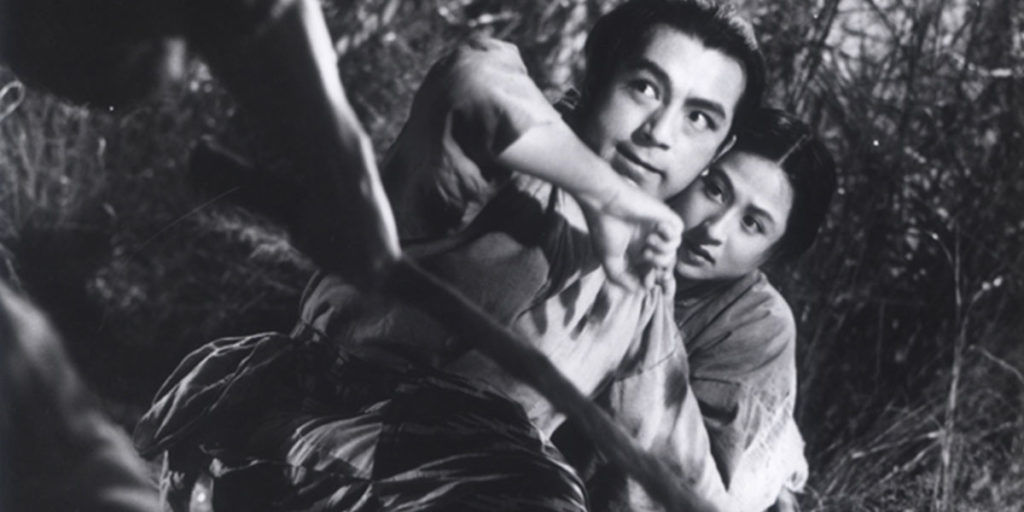
There’s one great thing about retrospectives like Summer in Japan. It introduces audiences to different characters outside of the ones in Kurosawa’s movies. We get messy yet interesting ones like the titular women in Kon Ichikawa’s Makioka Sisters. They experience some hi jinks involving marrying off a sister Yukiko (Sayuri Yoshinaga), who deals with her limited options. Ichikawa seems to be the only director here to vaguely reference the war and he does it innocently. His previous movie An Actor’s Revenge is a bit better, putting actor Kazuo Hasegawa in two separate roles. He plays Yukinojo, a kabuki oyama avenging her parents. He also plays a cis male thief who acts as Yukinojo’s admirer and the film’s de facto Greek chorus. Here, Ichikawa plays around with darkness and warm light.
Kenji Mizoguchi wows audiences to this day with his classic, award winning movies. Kinuyo Tanaka is in both films in the retrospective, playing supporting roles. In Ugetsu she plays the wife of a man who temporarily leaves her for a mysterious beauty (Machiko Kyo). In Sansho the Bailiff she is Tamaki. She is an ardent follower of her husband’s pacifism and pays a hefty price for doing so. Exiling themselves, a woman separates her from her children. She sings a song about her children that her daughter (Kyoko Kagawa) eventually hears. It gives her hope that she can escape. In both films Mizoguchi is an observer of nature, indestructible in contrast to human frailty. And of course, the film has one of the most haunting images in the history of cinema.
Tanaka proves to be one of the retrospective’s biggest discoveries, a representative of Japanese motherhood. In Keisuke Kinoshita’s version of The Ballad of Narayama she plays an aging matriarch. Her family has four generations, living in a town where they rid themselves of their elders when they turn 80. She’s 79. She deals with the tenuous relationship she has with her daughter in law. Said daughter in law loves her more than her grandchild does. Kinoshita delves into the economic side of tradition, using their rituals so they have less mouths to feed. He also uses kabuki, a normally stylized genre, to tell the stories of these worn out faces. He marries traditional ornamentation with realism. The earthy tones of the characters’ simple lives complementing the dramatic, pastel lighting in the background.
Speaking of dramatic, Hiroshi Teshigahara’s Woman in the Dunes encompasses that but in the best way. It adapts Kobo Abe’s novel that portrays the story of an amateur entomologist Niki Junpei (Eiji Okada). He would have had a grand time observing butterflies had it not been for a village that bamboozles him. They do so by forcing him to shack up with a woman (Kyoko Kishida). It’s a vehement criticism of both archaic tradition and capitalism. In doing so it effectively lets the audience feel a sense of dread that we masochistically enjoy. And it is, in its own way, kind of sexy. It also shows off Okada’s powerhouse performance, better than his Western counterparts who get recognition for their work. If you want to see acting, go see Japanese cinema.
TIFF’s retrospective Summer in Japan goes on for two glorious months. Come on, stay in the rising sun. For showtimes and to purchase tickets, go to https://www.tiff.net/japan.


